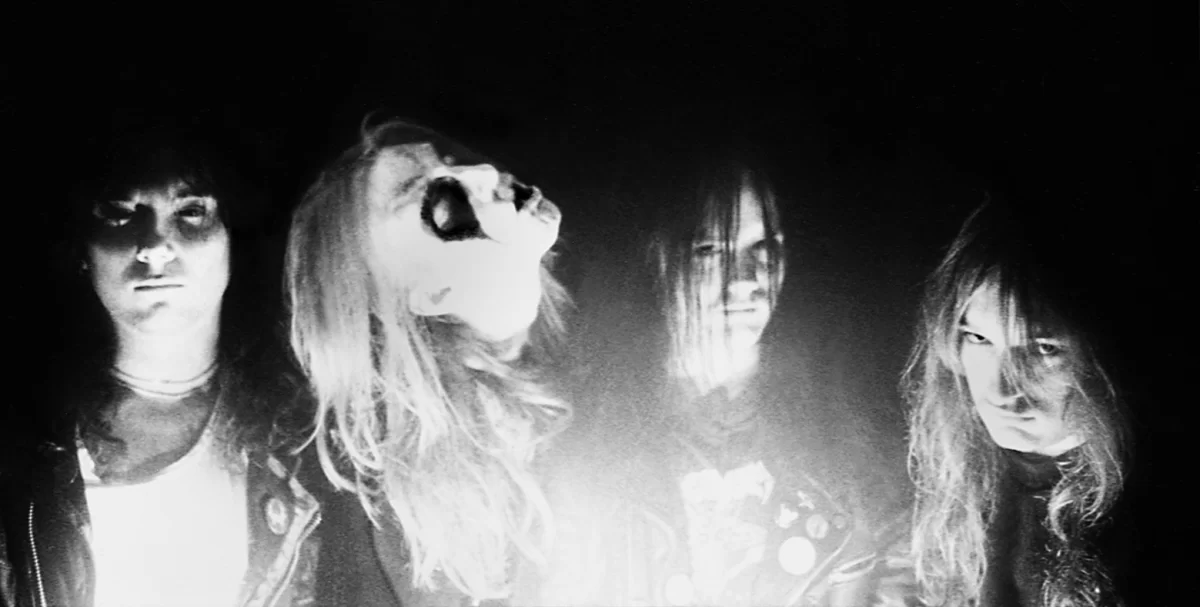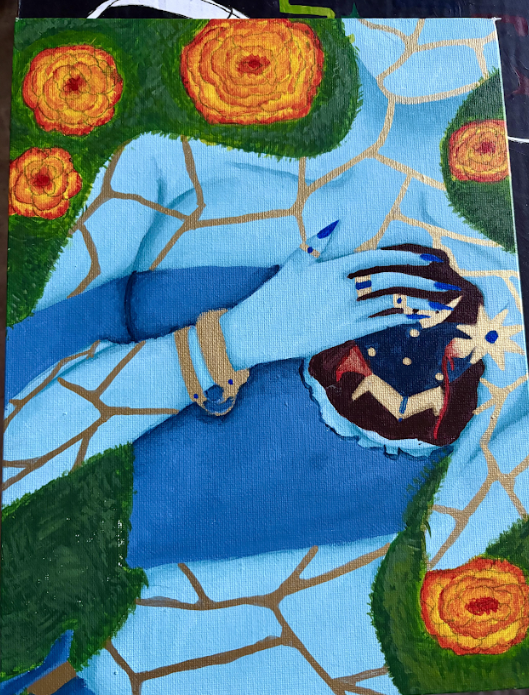On October 6, 2023, the band Mayhem is performing at the Mission Ballroom in Denver along with Cannibal Corpse, as part of their ongoing North American tour.
Mayhem is a band unlike any other and they are no strangers to being in the limelight; this is almost entirely due to their notorious past. In order to truly understand Europe’s most infamous band, one must first understand their bizarre history.
Mayhem are known as the original pioneers of Norwegian Black Metal and they are heavily credited with their influence on the black metal genre as a whole.
In 1984 the band was founded by guitarist Øystein Aarseth, from then on known by his stage name “Euronymous,” bassist Jørn Stubberud, known as “Necrobutcher,” and drummer Kjetil Manheim. Mayhem started off as a cover band, but quickly gained traction with their first EP “Deathcrush.”
Manheim and the band’s short term vocalist “Maniac” both left Mayhem in 1988, and after a few temporary replacements the band’s most iconic lineup was born. Newly recruited drummer Jan Axel Blomberg, referred to as “Hellhammer” was to become the longest serving member of Mayhem. However, Mayhem became legendary following the recruitment of the powerful young vocalist “Dead.”
Per Yngve Ohlin, nicknamed “Pelle,” was nineteen years old when he discovered Mayhem. As the vocalist and founder of the Swedish thrash metal band “Morbid,” Ohlin was disappointed at the band’s lack of success. Knowing that Mayhem was in desperate need of a new vocalist, he decided to contact them in a way they’d never forget.
In order to get the band’s attention, Ohlin mailed them a tape of his band’s demo “December Moon” along with a crucified mouse. This landed him the spot as the new vocalist of Mayhem. After coining the stage name “Dead,” Ohlin’s presence took the band to new extremes.
Any and all accounts regarding Dead from those who knew him described him as eccentric and very troubled, to say the least. As his name suggests, the young vocalist was fascinated with the idea of death. Dead’s fascination with death and dying quickly became an all consuming obsession. It is widely believed that this obsession stemmed from a near death experience Ohlin had as a child.
When he was ten years old, Dead was beaten so badly by bullies that his spleen ruptured. His breathing ceased, and his heart stopped, causing him to be declared clinically dead for a period of time before he was eventually revived. This experience understandably took an immense toll on the young boy’s mental state from then on.
Dead was speculated to have suffered from Cotard’s syndrome, an extremely rare mental disorder in which the sufferer believes that they are not a living person, but rather someone who is already dead. Many of Dead’s lyrics could be used to support this theory.
Regardless of his condition, Dead’s extreme fascination with death gave Mayhem the notoriety they craved. Dead took the band’s image very seriously. He started doing his makeup in a style fittingly dubbed “corpse paint,” which involved covering his entire face with white but making the area around the eyes and mouth pitch black. Mayhem bassist Necrobutcher later commented on this look stating, “It wasn’t anything to do with the way Kiss and Alice Cooper did makeup. Dead actually wanted to look like a corpse.” After Dead and Euronymous started wearing corpse paint to their concerts, the style of makeup spread throughout the entire black metal scene.
However, makeup wasn’t the only thing Dead used to perpetuate Mayhem’s sinister image. Before shows, he would bury his clothes in the ground so that he could go on stage smelling like he had just climbed out of a grave. Dead also kept a dead crow in a bag to bring with him to shows and smell before going on stage.
Mayhem shows from 1998 to 1991 were gruesome. The band often had the severed heads of pigs or sheep mounted on stakes near the stage. In some shows Dead would go so far as to cut himself on stage and splatter his own blood on the front row of the audience. Because of the gore, many people would leave in the middle of shows. The band claimed that this was how they would separate the true black metal fans from posers.
Euronymous became infatuated with Dead’s state of mind, commitment, and intensity. The two quickly became very close friends when the latter joined the band.
In 1990, Mayhem decided to focus on writing and recording new music for their upcoming album “De Mysteriis Dom Sathanas.” This prompted the four members to move in together in a house in the woods of Euronymous’ hometown, Oslo. It is here where the band hit a turning point and relationships among members soured, especially the friendship between Dead and Euronymous. Necrobutcher later explained that while living together, the two often got on each other’s nerves and had many disagreements. Dead’s mental state worsened, and the already depressed young man retreated further into isolation. It was at this point where Euronymous began encouraging Dead to end his own life. Euronymous would torment Dead, pushing him to his limit more and more each day, as if to test his breaking point.
While the rest of the band was out of town visiting family for Easter in early April of 1991, Dead was left alone to his own devices On April 8 1991, the twenty two year old singer committed a gruesome suicide. A day later his body was found by Euronymous, who used a ladder to climb through the open window into Dead’s bedroom, as he did not have a key to the house. Upon discovering the mangled body of his friend, Euronymous quickly exited the house and made his way to a nearby convenience store where he purchased a disposable camera and some film. Euronymous arrived back at the house and posed Dead’s body next to the shotgun and knife he used to do the job, snapping photos with the intent to use them for a future album cover. He also took pieces of his late friend’s skull to make necklaces that he would later give to those he was closest to in the black metal scene. Only after all this did Euronymous decide to call the authorities.
After the authorities took Dead’s body out of the house, Euronymous called Necrobutcher to tell him the news. Necrobutcher has stated that Euronymous seemed unphased and even pleased with their friend’s death. Euronymous told him about the pictures, necklaces, and even started a rumor that he made a stew out of Dead’s brain. This exploitation of their good friend’s tragic demise disgusted Necrobutcher who promptly left the band out of contempt for Euronymous and his actions.
Euronymous used Dead’s suicide as a catalyst for a new, even more extreme era of black metal. He claimed that Dead had killed himself because black metal was becoming a “trend.” However, after Dead’s suicide and the rumours born from it spread, the genre started gaining steady momentum. This is exactly what Euronymous wanted. By calling people posers and saying “you can’t have this,” the interest and demand for the genre greatly increased.
In the summer of 1991, Euronymous opened his very own record store, “Helvete,” meaning “hell” in Norwegian. He opened the store in hopes that it would fund the production of “De Mysteriis Dom Sathanas,” as well as his record label “Deathlike Silence.” Euronymous quickly became the leader of the black metal scene in Norway and the basement of Helvete provided a meeting place for other prominent figures in the scene. Members of this tight knit and cult-like group dubbed it “The Black Circle.” Helvete is largely responsible for introducing Norwegian black metal to the rest of the world.
One of the most infamous members of Euronymous’ basement cult is Varg Vikernes who went by the stage name “Count Grishnackh,” the founder and only member of the black metal band Burzum. Vikernes was by all definitions of the word, an extremist. His wide range of beliefs included nazism, as well as a lesser known branch of paganism, called Odinism. Intrigued by Vikernes’ extreme anti-Chrisian ideals and impressed by his musical talent, Euronymous determined that he was exactly what the Black Circle needed.
Vikernes and Euronymous would often collaborate on each other’s music and quickly became very close. At first their intense personalities matched very well with one another and they fueled each other’s extreme ideologies. This, however, proved to be devastating. The union of Euronymous and Vikernes became the catalyst for a series of events that brought the entire country of Norway to its knees.
On June 6, 1992, one of Norway’s oldest and most revered churches, the Fantoft Stave church, burned to the ground. Christian Stave churches in Norway are considered sacred and culturally significant. Stave churches are well preserved wooden churches dating all the way back to the 12th century. This particular church fire was tragic, although it wasn’t perceived to be suspicious. However, panic began to arise in Norway when more and more churches started burning down. One church fire could be written off as accidental, but multiple fires were no coincidence. The police, media, and citizens of Norway were shocked and clueless as to who was responsible for the arson attacks. By the beginning of 1993, seven churches were burned down across Norway and Sweden.
Meanwhile, activity in the Black Circle rose in intensity. After the burning of the Fantoft church, Vikernes confided in Euronymous and a few other members that he was the one who set it ablaze. Euronymous was excited by this. He and Vikernes had talked and joked about burning down churches in the past, but he had never thought Vikernes would actually do it. This first act of arson proved to be exhilarating for Vikernes, so much so that he couldn’t help but do it again.
More and more churches were set ablaze across the once peaceful country and it is widely believed that Vikernes and other members of the Black Circle were solely to blame. Media coverage of the arsons was vast, but at the time no one other than members of the circle had any idea of who was committing these acts of terrorism.
On August 21, 1992, yet another crime would stun an already panic-stricken country. Eighteen year old Helvete employee, drummer for the black metal bands Thorns and Emperor, and respected member of the Black Circle, Bård Guldvik Eithun, who went by the name “Faust,” was walking home from a pub in Lillehammer when he was approached by an older gay man. The man, Magne Andreassen, tried to solicit him for sex. Accepting his advances, Faust and Adreassen walked into a nearby wooded area. It was here that Faust stabbed Adreassen thirty-seven times.
Upon returning to Helvete and seeing media coverage of the murder, Faust confessed to Euronymous and Vikernes that he was the one who committed it. Faust, who had taken an interest in serial killers, had no clear motive or remorse for the crime. His band member Ihsahn later remarked, “I guess he just wanted to know what it was like to kill someone.” At the time, police had no suspects for the crime.
Following another church burning on Christmas Eve of 1992, Varg Vikernes got in contact with two journalists in January of 1993, claiming to have known who was responsible for the recent crimes in Norway. Although he was careful not to give out incriminating information regarding himself or specific members, Vikernes implicated the Black Circle in the recent murder and arsons. An article was soon published in the popular newspaper Bergens Tidende. On the same day as the article was published, Vikernes was arrested, but later let go, as police could not get any solid information out of him.
After this first article was published, the media began closing in on the Black Circle. There was finally someone to blame in the series of crimes that shocked the entire nation and the presumed Satanic cult were the perfect suspects. Euronymous was enraged by all of this unwanted attention, but Vikernes reveled in it. He claimed that he had gone to the media in order to help boost Helvete’s sales, and promote Burzum’s new album. The album, “Aske” which translates to “ashes” would feature an image of the Fantoft church burning as its cover art, and the first 1000 copies would come equipped with lighters.
Due to all of the media attention the black metal scene began to receive, Euronymous decided it best to close Helvete until things subsided. However, in March of 1993, “Kerrang! Magazine” published a cover story about the connection between the recent crimes in Norway and the black metal scene, with Vikernes’ picture plastered on the front of the issue. This article brought international attention to the Norwegian black metal scene.
Euronymous and Vikernes’ friendship soured entirely, as both parties were incensed by the other’s response to all the attention. Euronymous was angry that Vikernes brought the police and media scrutiny on the Black Circle in the first place, and Vikernes was irked by Euronymous’ reaction. The hostility between the two only got worse over time.
On August 9, 1993, Snorre Ruch, or “Blackthorn,” a mutual friend of Euronymous and Vikernes and musician who had been helping with the production of “De Mysteriis Dom Sathanas,” received a call. An angry Euronymous had called Ruch, who was visiting Vikernes’ house in Bergen. Euronymous remarked that he wanted to kill Vikernes, which Ruch knew was an empty threat. Unbeknownst to both of them however, Vikernes had heard the entire conversation. It was at this moment that Vikernes decided once and for all that he wanted to kill Euronymous.
Varg Vikernes convinced Snorre Ruch to accompany him on the nearly 300 mile drive from Bergen to Euronymous’ apartment in Oslo. Vikernes had planned to arrive at the apartment under the guise of discussing his contract with “Deathlike Silence.”
In the early hours of the morning of August 10, 1993, Vikernes and Blackthorn arrived at Euronymous’ apartment building. Vikernes buzzed the apartment, demanding Euronymous let him in so they could discuss his contract. Understandably confused, Euronymous asked him to come back in the morning, to which the former insisted they needed to talk immediately.
When Euronymous eventually let Vikernes in, they talked for a bit before Vikernes pulled out a knife. The panicked Euronymous attempted to find any way in which he could defend himself, to no avail. Vikernes began stabbing him. During the altercation, a glass lamp was knocked over, shattering on the floor. In his attempts to flee from Vikernes, Euronymous cut his bare feet open on the glass shards. Eventually making his way out of the apartment with Vikernes hot on his tail, Euronymous frantically knocked on his neighbors doors, screaming and begging for help, all while being stabbed viciously and repeatedly. Euronymous fell down the stairs as he tried to make his way to the apartment complex’s exit. It was in the stairwell of the building that his body was found.
The twenty-five year old Euronymous’ body was discovered a few hours later with twenty-three stab wounds. Police soon implicated Vikernes, who left his contract signed and dated in Euronymous’ apartment. He was arrested nine days after the murder.
Varg Vikernes was convicted for the murder, possession of illegal firearms and explosives, as well as three of the seven church burnings. He received twenty-one years for his crimes, the maximum prison sentence in Norway. Although he only served fifteen years, he was released from prison in 2009.
Bård “Faust” Eithun was later arrested for the murder of Magne Andreassen and received fourteen years. Snorre “Blackthorn” Ruch received eight years for being an accomplice in Euronymous’ murder, his sentence was lowered when his mental instability at the time of the crime was taken into account.
“De Mysteriis Dom Sathanas” was finally released in 1994. Before the album’s release, Euronymous’ parents had asked drummer Hellhammer to remove Vikernes’ bass recordings. He agreed and told them that he would re-record the bass himself, but never did.
In 1995, Necrobutcher and Hellhammer reunited at Euronymous’ funeral and decided to reform the band with previous vocalist, Maniac. Since then, Mayhem has been very active, having released five studio albums, three EPs, and various live concert recordings. As a band originally designed to only be for a select few, Mayhem has gone on to perform at the Norwegian Grammys, and even be inducted into Rockheim Hall of Fame.












